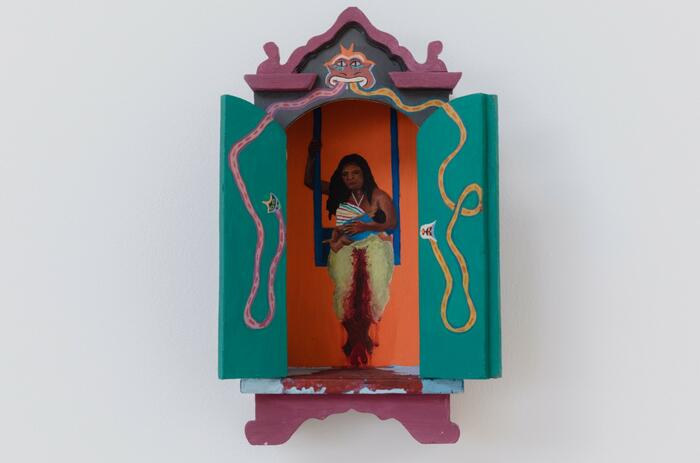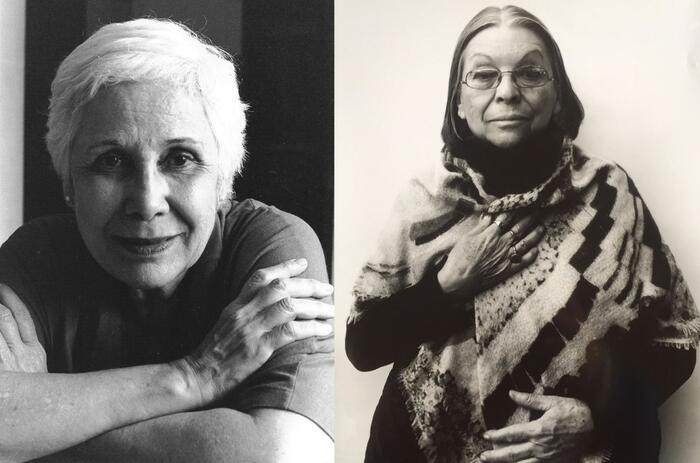BIENNALE UNVEILED: GLOBAL EXHIBITION AND COMMERCE OPPORTUNITIES.
Art fairs and biennials inhabit the same artistic universe but serve distinct purposes. The former primarily functions as commercial hubs where artworks are bought and sold, whereas biennials act as global stages, celebrating the rich diversity of contemporary art.

Since its inception in 1895, the Venice Biennale has been a trailblazer for such events, initially spotlighting European art but gradually incorporating diverse artistic voices from across the globe and reaching a peak this edition with a significant presence of artists from the global south. Titled “Stranieri ovunque - Foreigners everywhere,” this Biennale host a total of 331 artists with connections to at least 69 countries, the event illustrates the complex interplay of national identities within the art world. Here, artists' nationalities often defy simple categorization, as many were born in one country but either passed away or currently reside in another. This edition stands out as the first curated by a Latin American, featuring a remarkable ensemble of 85 artists from the region—comprising 28 living and 57 late artists. Their affiliations span 16 countries throughout Latin America and the Caribbean, highlighting the profound impact this region has on the artistic landscape.
-
Exterior view of the space in which to place me (Jeffrey Gibson’s exhibition for the United States Pavilion, 60th International Art Exhibition – La Biennale di Venezia), April 20 – November 24, 2024. Forecourt sculpture: the space in which to place me (2024). Photograph by Timothy Schenck.
-
Exterior view of the space in which to place me (Jeffrey Gibson’s exhibition for the United States Pavilion, 60th International Art Exhibition – La Biennale di Venezia), April 20 – November 24, 2024. Photograph by Timothy Schenck.
On top of the artists exhibited across the Giardini and the Arsenale, the city is also alive with numerous collateral events and exhibitions, further cementing Venice status as a pivotal gathering in the international art scene. Biennials are not merely art shows but festivals of creativity, offering an immersive experience through a blend of large-scale installations, video art, forums, and live performances. They serve as cultural landmarks and economic catalysts, bolstered by local government support, enhancing their host cities' prestige and economic vitality. However, while biennials typically convey an air of cultural exhibition over commerce, it's insightful to remember that when the Venice Biennale was created in 1895, one of the intentions was to promote contemporary art and enable artists to financially benefit from their creative output. Until the tumultuous year of 1968, when the spirit of student protests led to a reevaluation, the Biennale featured a sales office.
Today, even though biennials are not openly commercial by design, they invariably involve the discreet financial backing of art dealers. This patronage is essential for the creation, transport, and display of significant artworks, and on occasion, transactions unfold quietly. A notable instance occurred in 2015 when François Pinault discreetly acquired eight large canvases by Georg Baselitz, totaling $8.9 million, during the Venice showcase, hinting at the subtle yet undeniable commerce that operates within these events. The current edition witnesses this subtle interplay of art and commerce once more, as the Venice Biennale and Art Basel open their doors in close succession. This calendar coincidence turns Venice into a prelude for the art world's elite, with many collectors embarking from Venice to Basel. It's a choreographed dance of art, with galleries often presenting in Basel the same artists they celebrated in Venice, a testament to the enduring symbiosis between cultural exhibitions and the art market.
-
Installation view of the space in which to place me (Jeffrey Gibson’s exhibition for the United States Pavilion, 60th International Art Exhibition – La Biennale di Venezia), April 20 – November 24, 2024. From left to right: IF NOT NOW THEN WHEN (2024); The Enforcer (2024); WE WANT TO BE FREE (2024) Mural: WE ARE MADE BY HISTORY (2024) Photograph by Timothy Schenck.
-
Installation view of the space in which to place me (Jeffrey Gibson’s exhibition for the United States Pavilion, 60th International Art Exhibition – La Biennale di Venezia), April 20 – November 24, 2024. Birds from left to right: we are the witnesses (2024); if there is no struggle there is no progress (2024). Wall works from left to right: BIRDS FLYING HIGH YOU KNOW HOW I FEEL (2024); IF YOU WANT TO LIFT YOURSELF UP LIFT UP SOMEONE ELSE (2024). Photograph by Timothy Schenck.
The honor of being selected to represent one's country at the Venice Biennale carries considerable weight. It not only bestows a mark of distinction upon an artist but also elevates their career by amplifying their prestige, enhancing their visibility, and notably, by potentially increasing the value of their work in the market. This is particularly true for artists who have the backing of savvy and influential galleries.
However, the financial hurdles of exhibiting at the Venice Biennale can be formidable, particularly for artists showcasing multiple works. To illustrate, let’s look at how the financial commitment for the U.S. representation has soared. Robert Rauschenberg's participation in 1964 required a budget that, adjusted for inflation, would approximate $720,000 today. Fast forward to 2022, and Simone Leigh’s display commanded a staggering $7 million. This escalation underscores a growing reliance on funds from collectors and galleries, as government contributions fail to keep pace with inflating costs. This fundraising necessity has become an integral part of the event’s logistics, but it's not without controversy. It raises concerns about the accessibility of the biennale, as only those artists with influential backers capable of shouldering such steep financial burdens can afford to exhibit. This dynamic also poses ethical questions about the art market's influence on what is ostensibly a cultural event.
-
Installation view of the space in which to place me (Jeffrey Gibson’s exhibition for the United States Pavilion, 60th International Art Exhibition – La Biennale di Venezia), April 20 – November 24, 2024. Center: WE HOLD THESE TRUTHS TO BE SELF-EVIDENT (2024) Photograph by Timothy Schenck.
-
Installation view of the space in which to place me (Jeffrey Gibson’s exhibition for the United States Pavilion, 60th International Art Exhibition – La Biennale di Venezia), April 20 – November 24, 2024. Wall works from left to right: WE WILL BE KNOWN FOREVER BY THE TRACKS WE LEAVE (2024); THE RETURNED MALE STUDENT FAR TOO FREQUENTLY GOES BACK TO THE RESERVATION AND FALLS INTO THE OLD CUSTOM OF LETTING HIS HAIR GROW LONG (2024); LIBERTY WHEN IT BEGINS TO TAKE ROOT IS A PLANT OF RAPID GROWTH (2024); THE GREAT SPIRIT IS IN ALL THINGS (2024). Bust: I’M A NATURAL MAN (2024). Photograph by Timothy Schenck.
Simone Leigh's 2022 appearance, for instance, was underwritten by the prominent gallery Hauser & Wirth, continuing a pattern observed when they supported Mark Bradford in 2017. The current U.S. Pavilion, showcasing Jeffrey Gibson’s work—an artist of Mississippi Choctaw and Cherokee heritage represented by an array of galleries—required a budget of $5.8 million, with a meager 7.5% coming from government coffers. Bridging this financial gap necessitated a concerted effort by curators, galleries, and philanthropists, who managed to secure substantial contributions from foundations and through innovative fundraising methods, including the sale of limited-edition luxury blankets at Sotheby’s. Simultaneously, Christie’s is supporting the Nigerian pavilion as well as partly funding the British pavilion who also benefits from support from the Frieze art fair. So, we have galleries, art fairs and auction houses all financing Biennale events. Undoubtedly, galleries will seek to offset their expenditures through increased sales and higher pricing strategies. For auction houses, events like these serve as ideal occasions to cultivate client relationships. As for Frieze, while less explicit, it's probable that their aim also includes attracting a network of galleries and collectors.
In fact, the Venice Biennale, despite its non-commercial veneer, has long been understood as a marketplace where artworks, eventually, are sold. This tacit understanding was made manifest in labels that, up until 2019, credited the artist's representative gallery—a discreet nod to potential buyers. Although this practice has since ceased, those keen on acquisition can easily unearth the necessary information with a simple online search.
-
Installation view of the space in which to place me (Jeffrey Gibson’s exhibition for the United States Pavilion, 60th International Art Exhibition – La Biennale di Venezia), April 20 – November 24, 2024. From left to right: She Never Dances Alone (2020); WHEREAS IT IS ESSENTIAL TO JUST GOVERNMENT WE RECOGNIZE THE EQUALITY OF ALL PEOPLE BEFORE THE LAW (2024). Photograph by Timothy Schenck.
-
Exterior view of the space in which to place me (Jeffrey Gibson’s exhibition for the United States Pavilion, 60th International Art Exhibition – La Biennale di Venezia), April 20 – November 24, 2024. Forecourt sculpture: the space in which to place me (2024). Photograph by Timothy Schenck.
-
Installation view of the space in which to place me (Jeffrey Gibson’s exhibition for the United States Pavilion, 60th International Art Exhibition – La Biennale di Venezia), April 20 – November 24, 2024. Center: WE HOLD THESE TRUTHS TO BE SELF-EVIDENT (2024) Photograph by Timothy Schenck.
Commercial aspects aside, an artist's feature at the Venice Biennale often marks a significant milestone in their career. The long-running exhibition garners international attention, bringing unnoticed artists to the forefront of the global art scene. This visibility often translates into business opportunities. Galleries have their own approach, but for artists, the Biennale can lead to increased demand and higher prices for their works. But the Biennale isn't just a marketplace; it's a launchpad for future success. When work connects with an audience, it can lead to larger exhibitions and major acquisitions, cementing an artist's status in the market. Take Jeffrey Gibson, for example: after his Biennale selection, he earned a prestigious commission from the Metropolitan Museum of Art. This is the kind of impact the Venice Biennale can have.


















